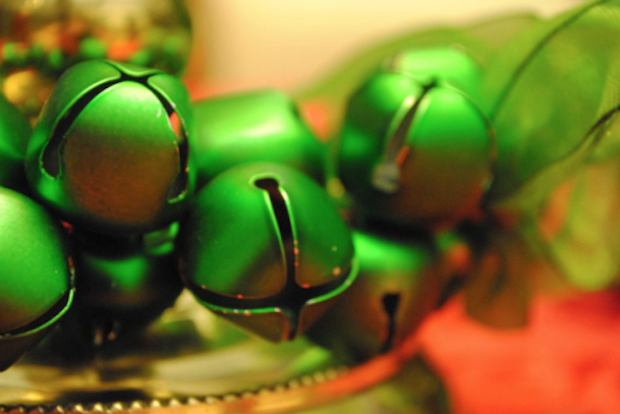It’s December, and before you know it, Santa Claus will be flying son char à travers les cieux (his sleigh across the skies). The tree is up, and the stockings are hung by the chimney with glee, and outside the snow… well, it’s currently very mild here.
I love December. “It’s the most wonderful time of the year” is definitely my mantra. Et les chants de Noel (and Christmas songs?)? I love them. Sometimes I even listen to them in July, but don’t worry. I do that privately so as not to annoy anyone else.
Lots of people claim to not like this festive music, but I won’t focus on these negative grinches at the moment. Throw on a Santa hat, and let’s be jolly.
“Jingle Bells” is an absolute classic, literally every single person can sing along. The song talks about the joy of riding in the a horse-drawn sleigh through the snow, and while I have my reservations about spending anything more than the necessary amount of time in the snow, I think I would give that a go given the chance.
“Dashing through the snow in a one-horse open sleigh…” You can certainly finish this verse and the chorus, but did you know there was more to the song?
There’s Miss Fanny Bright, an unfortunate slipping incident, and some dating advice...

Jingling Your Bells in French
Et la version française (and the French version?) ? Completely different. Rather than focusing on the winter transportation, the French praise the winter wind and wish people a Happy New Year. And like the English version, there’s a little story in there, too.
While the words are very different, l’air reste le même (the tune is the same).
Chantons (let’s sing!) :
Vive le vent, vive le vent,
Long live the wind, long live the wind,
Vive le vent d’hiver,
Long live the winter wind,
Qui s’en va sifflant, soufflant
Which goes whistling, blowing
Dans les grands sapins verts, oh !
In the big green pine trees, oh!
Vive le temps, vive le temps,
Long live the weather, long live the weather,
Vive le temps d’hiver,
Long live the winter weather,
Boules de neige et Jour de l’An
Snowballs and New Year’s Day
Et Bonne Année grand-mère !
And Happy New Year, Grandma!
Sur le long chemin
Along the path
Tout blanc de neige blanche
All white from the snow
Un vieux monsieur s’avanceAn old man comes closer
Avec sa canne dans la main
With his can in his hand.
Et tout là-haut le vent
And all above the wind
Qui siffle dans les branches
Which whistles in the branches
Lui souffle la romance
Blows on him the romance
Qu’il chantait petit enfant, oh !
He sang as a little child, oh!
Vive le vent, vive le vent,
Long live the wind, long live the wind,
Vive le vent d’hiver,
Long live the winter wind,
Qui s’en va sifflant, soufflant
Which goes whistling, blowing
Dans les grands sapins verts, oh !
In the big green pine trees, oh!
Vive le temps, vive le temps,
Long live the weather, long live the weather,
Vive le temps d’hiver,
Long live the winter weather,
Boules de neige et Jour de l’An
Snowballs and New Year’s Day
Et Bonne Année grand-mère !
And Happy New Year, Grandma!
Joyeux, joyeux Noël
Merry, Merry Christmas
Aux mille bougies
To the thousand candles
Qu’enchantent vers le ciel
Which light up toward Heaven
Les cloches de la nuit.
The night’s bells
Vive le vent, vive le vent
Long live the wind, long live the wind
Vive le vent d’hiver
Long live the winter wind
Qui rapporte aux vieux enfants
Which brings to old kids
Leurs souvenirs d’hier, oh !
Their memories of yesterday, oh!
Et le vieux monsieur
And the old man
Descend vers le village
Goes down toward the village
C’est l’heure où tout est sage
It’s the time when everyone is good
Et l’ombre danse au coin du feu.
And the shadow dances near the fire
Mais dans chaque maison
But in each house
Il flotte un air de fête
There’s a festive air
Partout la table est prête
Everywhere the table is ready
Et l’on entend la même chanson, oh !
And you hear the same song, oh!
Vive le vent, vive le vent,
Long live the wind, long live the wind,
Vive le vent d’hiver,
Long live the winter wind,
Qui s’en va sifflant, soufflant
Which goes whistling, blowing
Dans les grands sapins verts, oh !
In the big green pine trees, oh!
Vive le temps, vive le temps,
Long live the weather, long live the weather,
Vive le temps d’hiver,
Long live the winter weather,
Boules de neige et Jour de l’An
Snowballs and New Year’s Day
Et Bonne Année grand-mère !
And Happy New Year, Grandma!

Blog submitted by: David at The French Property Network - Cle France.
This blog was originally posted on The French Language Blog pages.